Test drive Audi A6 1997 - 2001 sedan
Boxing
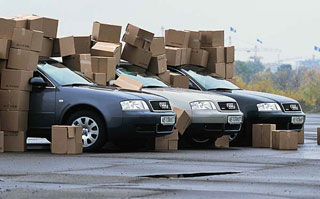 EVERY MAN TO HIS OWN TASTE. Traders in Russia wore the most diverse set in their boxes. Audi does something similar, offering the richest of competitors the choice of transmissions.
EVERY MAN TO HIS OWN TASTE. Traders in Russia wore the most diverse set in their boxes. Audi does something similar, offering the richest of competitors the choice of transmissions. Talk about what is better - a mechanical checkpoint or machine gun is like children's disputes who are stronger: a whale or elephant. The exception is Americans. They have long decided that it was more comfortable, more practical and more convenient, and about 80 percent of all North American car owners have automatic transmission cars. In Europe, and especially in Russia, the situation is different. Each of the two types has many supporters and opponents. Each of the types of checkpoints has its own set of positive and negative properties and qualities due to both a constructive difference between them and varying degrees of driver’s participation in the management process. The latter, of course, is a subjective thing, but the car is most often chosen so.
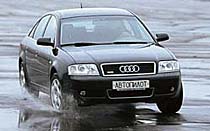
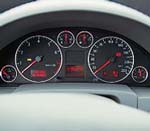
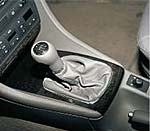
However, there are objective factors. The main running characteristics of the car depend on the type and device of the box: its dynamics, maximum speed, efficiency, as well as smoothness, comfort, ease of control, as well as, to a large extent, safety.
Any checkpoint does the same thing - changes the transfer ratio between the engine and the transmission. But each type does it differently.
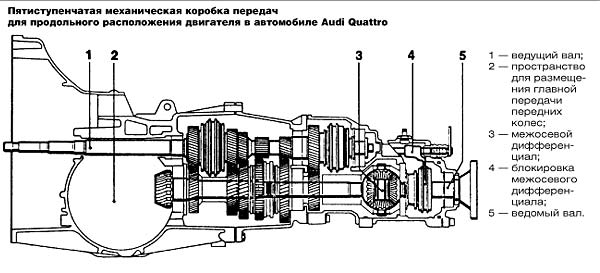
How exactly, we decided to check on the example of the Audi A6 with a 2.4-liter 6-cylinder engine. Why Audi? Yes, because this is the only brand in the back and chassis of which all three types of gearbox existing today in the world: a traditional 5-speed mechanics, a modern 5-speed TipTronic automatic and, finally, the latest novelty is the endless adaptive variator of Multitronic .
FREEDOM OF CHOICE. According to the majority, it can only be provided by mechanics. True, but only partly. The general device of this unit is familiar to everyone who, with a particular share of diligence, studied the materiel in the process of obtaining a driver’s license. Mechanical gearboxes on different models and brands differ only in the number of gears, which in modern serial cars are at least five, but not more than six. Why is that? And simply because less than five gears do not provide the optimal range of gear rates, and more than six are inconvenient and inappropriate for cars. The connection between the engine and the wheels, as well as the driver and the machine here, is relatively simple, mechanical.
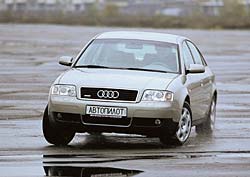
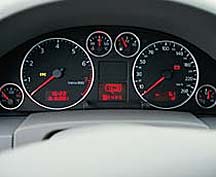
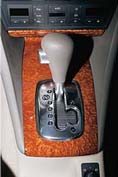
Further, too, everything seems to be simple - squeeze the clutch periodically and turn on that transmission that best corresponds to the engine speeds. But each medal has, as you know, the flip side - the driver himself falls depending on the car and is obliged to constantly work with the left foot and right hand. And in the city, in traffic? Monthly pumping the muscles of the left leg, accompanied by mixing the gears with a pen for an hour, can be brought to white heat. Freedom is very imaginary. Despite the fact that a clear and soft gear shift, a powerful reaction and picking up an elastic engine will give a lot of pleasure to many. But is it all?
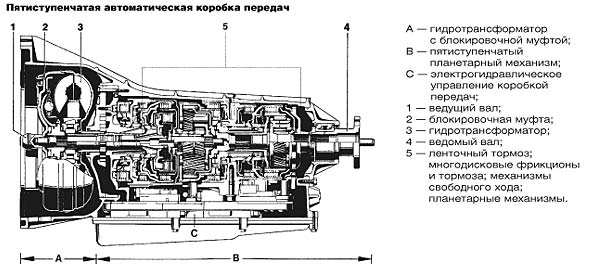
INTERMEDIARY SERVICES. Since the first serial automatic Hydra-Matic gearbox, developed by engineer Alfred Slopan, General Motors began to install a lot of hydraulic fluids developed by engineer Alfred Sloan. Simple hydromechanical gearboxes, where the process of changing the transfer numbers was carried out only due to oil pressure in the hydraulic system, are almost never found. Among the now-existing machines you can find 3- and 4-speed. All of them, as a rule, with electronic gear shift control and additional work modes, such as sports, economical and winter, as well as with the possibility of self -adaptation for driving style. And the most progressive among hydromechanics is a 5-speed automatic transmission with electronic control and a parallel of manual gear shifts. Audi became one of the first automakers who began to equip their cars with just such a transmission, and its corporate name Tiptronic has already become a household name.
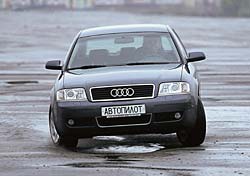
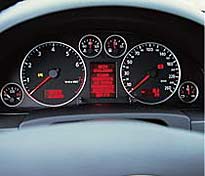
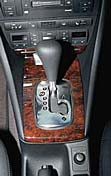
The assault rifles often sound accusations of inertia, large power losses, as a result, the deterioration of the dynamics and economy of the car. However, few people deny that from the point of view of simplicity and comfort in driving, it significantly exceeds traditional mechanics. As well as from the point of view of ensuring the most sparing operating modes of engine.
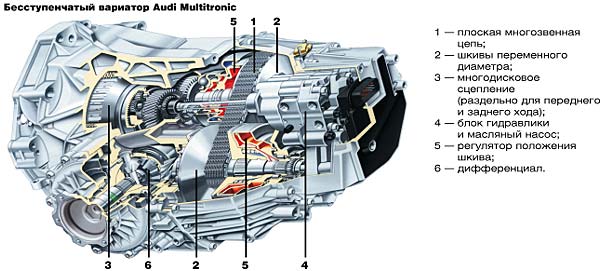
On Tiptronic, you can choose from three modes of operation: fully automatic, the same, but sports and what is commonly called manual. The first is good for a calm, comfortable driving. Gear shifts occur when the engine reaches about 4 thousand revolutions - softly, almost without shocks. True, if there is a need for a sharp maneuver, a sharp press of the pedal on the floor can turn on a kik-dowan, and the box after a second pause goes one to two gears down. But the most interesting manual regime. So, the selector in the slot on the right, the pedal is pressed by two -thirds, and the motor is spinning to 6500 revolutions, decently capturing the red zone. When the maximum permissible speed of revolutions is reached, the box automatically switches for the next gear. It is a pity that the flight field ends quickly and we must slow down, we never got to the fifth ... We drop the speed and slow down, continuing to monitor the display with the indication of the gears. As the speed drops, the box gradually switches from top to bottom. You can slow down the engine, pushing the selector on (-). However, if, as in this case, according to the box, the turnover is too high and can damage the system, Tipronik will not react to the command down right away, but only when the speed and speed falls to a level safe for the selected transmission. This behavior is very similar to the reference mechanics, although the own opinion of the machine is still present. Which is especially noticeable in comparison with Multitronic.
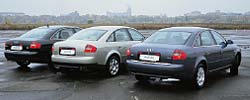 Casket with a secret. Which, generally speaking, is also a machine gun. But of a different kind. No complex planetary mechanisms, friction fruits and electric hydrogen drives. No fixed gear relations are a stranded variator. Its design is relatively simple: two pulleys of alternating diameter, between which a pushing plate chain moves. The smooth transition of the chain from one diameter to another provides a gradual change in the gear ratio. Hydraulics here is a minimum, and therefore, the delay and loss are small. It is curious that experts estimated the efficiency of this variator at 95 percent, but six of the called steps of this box is a conditional parameter, which serves only for a person to have the usual guidelines. The uniqueness of Audi development lies in the fact that the Multitronic box combines the advantages of an automatic machine and traditional mechanics and it can be installed on powerful engines with a maximum torque of almost 300 nm. This is its main difference from similar systems, for example, Honda and Nissan. There are two modes in it,
Casket with a secret. Which, generally speaking, is also a machine gun. But of a different kind. No complex planetary mechanisms, friction fruits and electric hydrogen drives. No fixed gear relations are a stranded variator. Its design is relatively simple: two pulleys of alternating diameter, between which a pushing plate chain moves. The smooth transition of the chain from one diameter to another provides a gradual change in the gear ratio. Hydraulics here is a minimum, and therefore, the delay and loss are small. It is curious that experts estimated the efficiency of this variator at 95 percent, but six of the called steps of this box is a conditional parameter, which serves only for a person to have the usual guidelines. The uniqueness of Audi development lies in the fact that the Multitronic box combines the advantages of an automatic machine and traditional mechanics and it can be installed on powerful engines with a maximum torque of almost 300 nm. This is its main difference from similar systems, for example, Honda and Nissan. There are two modes in it, 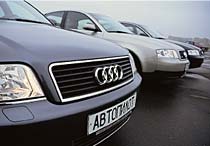 fully automatic or manual control. With the variator, there is no need for extra body movements, like the machine, it allows you to completely and completely focus on the steering process. At the same time, the car reactions to gas are much closer to mechanics than to Testronics. This is especially noticeable in manual mode: acceleration develops much more actively, without the slightest thought. The arrows of the tachometer and speedometer synchronously move from left to right, and at some point there is an incredible one: the speed still continues to grow, and the tachometer arrow returns to the mark of 1000 revolutions. Do you know another car, the engine speed of which at 140 km/h almost does not exceed a thousand? .. You can still contact the numbers that show that the dynamics of the Multitronic is identical to the mechanical gearbox, and the indicators in terms of economy is even better.
fully automatic or manual control. With the variator, there is no need for extra body movements, like the machine, it allows you to completely and completely focus on the steering process. At the same time, the car reactions to gas are much closer to mechanics than to Testronics. This is especially noticeable in manual mode: acceleration develops much more actively, without the slightest thought. The arrows of the tachometer and speedometer synchronously move from left to right, and at some point there is an incredible one: the speed still continues to grow, and the tachometer arrow returns to the mark of 1000 revolutions. Do you know another car, the engine speed of which at 140 km/h almost does not exceed a thousand? .. You can still contact the numbers that show that the dynamics of the Multitronic is identical to the mechanical gearbox, and the indicators in terms of economy is even better. Of course, you have to pay for all this. A machine with Tiptronic will cost about $ 2 thousand more expensive than its full analogue with mechanics, and Multitronic will add about $ 500 to the price. Are his virtues worth this? The answer is positive. There is, however, he has one drawback to date - the QUATTRO drive to such a checkpoint is not yet possible.
Text Andrey Timofeev, photo Alexey Ilyin
Cars were provided by Audi Center Moscow, (095) 797-9090. Insurance is carried out by Ingosstrakh, (095) 956-5555.
Model/Modification Audi A6 2.4 MT Audi A6 2.4 Tiptronic Audi A6 2.4 Multitronic
Gasoline engine with multi -point electronic injection
Working volume (cubic cub) 2393
Power, kW (L.S.) at about./Min. 125 (170) at 6000
The drive is constant full permanent full front
Gearbox Mechanical 5-speed automatic 5-speed with manual control mode of the Bested 6-band Variator with manual control mode
Dynamic characteristics
Maximum speed (km/h) 220 220 214
Acceleration to 100 km/h (sec.) 9.4 9.4 11.1
Economy
Fuel consumption (l/100 km):
City/highway/mixed cycle (L) 15.2/8.3/10.9 14.2/7.0/9.6 16.1/8.1/11.2
The price in Moscow (basic equipment) is $ 38.8 thousand $ 41.2 thousand $ 38.4 thousand.
Source: "Autopilot"
Video test drives Audi A6 1997 - 2001
Video crash tests Audi A6 1997 - 2001
Test drives Audi A6 1997 - 2001
Crash Test Audi A6 1997 - 2001
Krassh Test: Detailed Information23%
Driver and passengers
11%
Pedestrians













